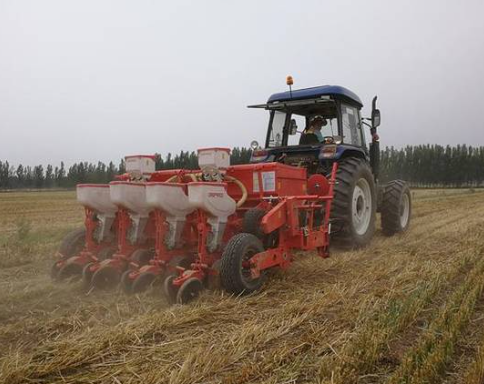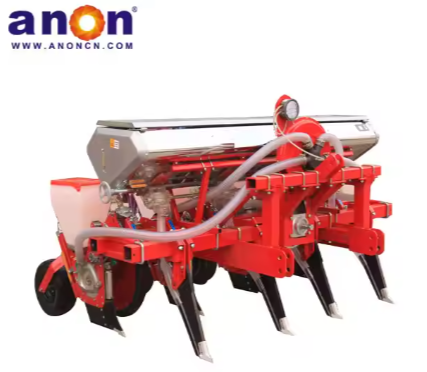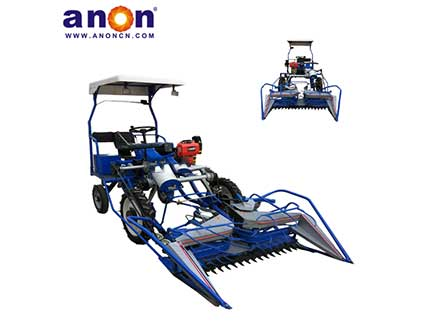Introduction
Rice goes through several processing steps before reaching your plate. Rice processing combines tradition, technology, and precision. In this article, we will delve into how rice is processed. We have extensive knowledge about rice processing due to our years of experience. If you are interested in the processing of rice, let’s get started!

The History of Rice
Rice cultivation dates back to around 8200 BC. Today, it is widespread globally, but Asia remains its primary hub. China, India, Bangladesh, and Indonesia are the main areas. Rice cultivation is expanding in range and yield, with a growing diversity of varieties. Italian creamy rice, Chinese Wuchang rice, and Thai jasmine rice are all very famous varieties. Historically, rice processing was primarily done by hand. However, advancements in technology, machinery, and equipment have taken over many of these tasks. In the following sections, you will learn about rice cultivation, harvesting, and processing.
How is Rice Grown?
Before you know how rice is processed, the initial step is to obtain the rice. You can purchase rice from a store, or you can choose to grow it yourself. Now you may wonder, how to grow rice.
To begin, choose a location that meets the requirements for growing rice: humid, water-rich, and warm. After completing your selection, you need to clear the weeds on the land and loosen the soil. These are all preparations for sowing.
Next, acquire the rice seeds. Purchase the quantity according to your needs. When you have the seeds, you are ready to prepare for sowing.
The final step is sowing. Traditionally, rice cultivation involves raising seedlings first, then pulling them up and transplanting them by hand—a process that is both time-consuming and labor-intensive. Today, specialized rice nursery machines and rice transplanters can greatly improve planting efficiency. You can also use direct rice seeding machines to sow rice seeds straight into the paddy field, simplifying the entire sowing process.
How is Rice Harvested and Processed?
When the rice turns a golden yellow, it’s time to harvest! Harvesting can be done either by hand or with machinery. Using machines—such as a rice combine harvester—is a far better choice, as they can cut, thresh, separate straw, and collect the grain all in one pass. The efficiency they deliver is far beyond what manual labor can achieve.

The Importance of Rice Processing
Curious about why rice undergoes processing? Before understanding how rice is processed, let’s understand its importance.
Firstly, rice processing involves the removal of impurities and husks. This makes rice more convenient for consumption. Additionally, during the processing, techniques like parboiled are used. These techniques aim to enhance its nutritional value and accommodate different dietary needs.
Secondly, processed rice boasts improved storage capabilities, reducing the risk of mold formation. This also makes transportation and distribution more efficient.
Finally, rice processing involves sorting grains based on their size and color. This makes it easier for people to purchase according to their needs while shopping.
Rice processing plays a crucial role in ensuring the quality, safety, and accessibility of rice products. Let’s now explore the detailed process of how rice is processed!
Rice Processing Step-by-Step
Are you curious about how rice is processed and transformed into polished rice? Below is a detailed breakdown of each step:
Cleaning
In the first stage, a pre-cleaning screen is used to remove larger and lighter impurities. Common equipment includes cylindrical pre-cleaners, planar rotary screens, and vibrating cleaning screens.
In the second stage, a destoner is used. The destoner separates stones from rice by combining screen vibration with airflow. On the destoning plate, airflow causes the rice and stones to form distinct layers—the lighter rice remains on top, while the heavier stones settle at the bottom. A tilted, textured plate (often referred to as a fish-scale plate) vibrates to gradually push the stones upward, while the rice, upon reaching an area without airflow, naturally drops down and is discharged from below.
As the first step in rice milling, the cleaning process is crucial. It ensures the smooth operation of all subsequent milling stages and guarantees the quality of the finished rice.
Drying Rice
Freshly harvested rice contains a high level of moisture, which can lead to increased grain breakage during milling. Therefore, drying the rice before milling is essential. Extensive research and testing have shown that a moisture content of 13.5%–14% is optimal for milling.
When traditional sun-drying methods can no longer meet demand, grain dryers provide an efficient solution, allowing large quantities of paddy to be dried in a single batch. Inside the dryer, hot air continuously evaporates and removes moisture from the rice. Once the moisture level reaches the desired standard, the rice can move on to the next processing stage.
Hulling the Husker
This step is carried out by a paddy huller. It uses two rubber rollers rotating at different speeds in opposite directions to squeeze and rub the paddy, separating the husk from the grain. Inside the husk separation chamber, a built-in fan blows away the husks, leaving only the grain behind. The rice obtained after complete dehusking is known as brown rice.
Paddy–Brown Rice Separation
After the dehusking process, we obtain a mixture of brown rice (fully dehusked grains) and paddy (grains that are not yet completely dehusked). Before moving on to the next milling stage, this mixture must be further separated.
The partially dehusked paddy is returned to the huller for another round of dehusking, while the separated brown rice proceeds to the milling stage. Any remaining paddy–brown rice mixture is sent back to the separator for repeated separation until the brown rice and paddy are completely separated.
Rice Whitening
Brown rice has a yellowish color. If you want white rice, you’ll need the help of a rice whitening machine. The brown rice enters the milling chamber through the hopper, where the high-speed rotating drum grinds away the yellow outer bran layer and continues polishing the grain. Through this whitening process, we obtain the white rice commonly consumed in daily life.

Grading the Rice
After going through the various processing stages above, some degree of grain breakage in the rice is inevitable. Therefore, separating broken rice from whole grains is essential. Traditionally, this was done manually using a winnowing basket. In mechanized production, we use a rice grading machine for this task.
The grader is equipped with a series of sieves arranged from top to bottom, with hole sizes decreasing at each level. This design allows us to separate whole grains, large broken pieces, medium broken pieces, and small broken pieces. The whole grains are the desired final product, while the broken rice can be used as animal feed or for other purposes.
Sorting the Color
If you have high-quality requirements for your rice, you can invest in a color sorter, which removes discolored grains that are not easily visible to the naked eye. After setting the desired target color, the rice enters the feeding port and falls along a chute into the inspection chamber. By detecting differences in light intensity and color, the machine identifies off-color grains and sends a signal to the air jet valves, which blow these grains into the reject bin during their fall.
To minimize waste, the rejected grains are usually processed through the color sorter two more times to ensure complete sorting. The result is nearly perfect, uniformly colored rice grains.
Rice Polishing
If you want your rice to have a more attractive appearance, you can invest in a rice polishing machine. When rice enters the polisher, it is first lightly sprayed with water to moisten the grains, forming a thin film on their surface. As the rice moves against the machine’s rotating components, it develops a smooth, crystal-like finish.
Polishing not only gives the rice a pearly luster but also removes residual bran from the grain surface. The process partially gelatinizes and pre-gelatinizes the surface starch, which helps fill in micro-cracks. As a result, the rice gains a bright, glossy appearance, improved storage stability, and enhanced eating quality, making rice polishing a highly worthwhile step.
Packaging
Finally, there is the packaging stage. Operating the rice packaging machine is simple—you just need to set the desired weight. Once set, the machine will automatically package and seal the rice according to the specified weight.
With that, you now have a complete understanding of all the steps involved in rice processing.
Innovations in Rice Processing
When learning about how to process paddy into rice, we encounter many machines. These machines have undergone significant innovation.
For example, the drying machine now includes a heat exchange system that ensures rice is evenly heated and quickly dried. Additionally, it’s equipped with a moisture detection device. Any rice that doesn’t meet the requirements will automatically undergo secondary drying.
A pneumatic hull machine can adjust the pressure of the rubber rollers using air pressure. Unlike traditional husk machines, which require manual pressure adjustment. This reduces the crushing rate of rice grains and improves the dehulling effect.
Furthermore, we have also innovated packaging and storage technologies. Vacuum packaging, improved MAP, and sealed storage prevent moisture, insects, and microbes. This ensures that rice maintains its quality during storage and transportation.
Overall, innovation in rice processing has improved production efficiency. Similarly, it has improved the quality, nutritional value, and safety of rice.

Types of Rice
After understanding the rice processing steps, we now have a clear grasp of the basic logic behind rice milling. It’s also important to know about the popular types of rice available on the market.
Brown Rice
Brown rice is the whole grain obtained after dehusking paddy rice using a hulling machine. It retains the bran layer, endosperm, and germ, preserving most of its nutrients. If you want brown rice, no further milling is needed. Brown rice is rich in dietary fiber, vitamins, minerals, and other nutrients.
White Rice
White rice is what we get after further processing brown rice by removing the bran, germ, and part of the endosperm. Although this results in a significant loss of nutrients, white rice has a soft texture and is easier to digest.
Parboiled Rice
Parboiled rice is made by subjecting paddy rice to a steam and heat treatment before hulling and milling. So, if you want to produce parboiled rice, you’ll need a dedicated parboiling unit in addition to the regular milling equipment. Parboiled rice is nutrient-rich and internationally recognized as a “green food”, so the price is relatively high. The heat treatment changes the starch structure, lowering its glycemic index, making it especially suitable for diabetics. During this steaming process, nutrients from the husk are reabsorbed into the endosperm, enhancing its nutritional value.
Rice By-Products after Rice Processing
After processing rice, you generate various by-products aside from rice. You can utilize these products to avoid waste. You can use rice husks as valuable raw materials for combustion in drying machines. Similarly, you can repurpose straw as livestock feed or use it in papermaking processes.
Conclusion
Every step of rice processing aims to deliver high-quality rice to consumers worldwide. You must fully understand how to process rice now.
For more relevant information or if you need the agro machine, visit ANON. The experts are ready to provide you with additional insights!
FAQ
When is rice harvested?
Rice is typically harvested between July and November, with the peak harvest period usually occurring in September and October. The exact timing depends on the rice variety, planting date, and local climate conditions.
How is rice harvested in the United States?
Once the rice plants mature, grains develop at the top of long panicles, with flowers branching in clusters. After the fields are drained, combine harvesters are used to harvest the rice, simultaneously separating the grains from the stalks.
Why is rice bran removed?
White rice is refined rice that has had the husk, bran, and germ removed. Refining changes the seed’s flavor, texture, and appearance; helps prevent spoilage (thus extending shelf life); and makes it easier to digest.
Why do Chinese people eat white rice instead of brown rice?
Although brown rice is known for its nutritional value, white rice is more commonly consumed in Chinese cuisine due to the combined effects of taste, texture, storage, and historical preferences. White rice is usually considered to have a milder taste, which can complement a wider range of dishes, and its longer shelf life makes it more suitable for storage and transportation.







